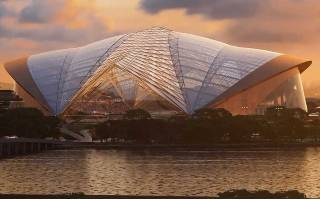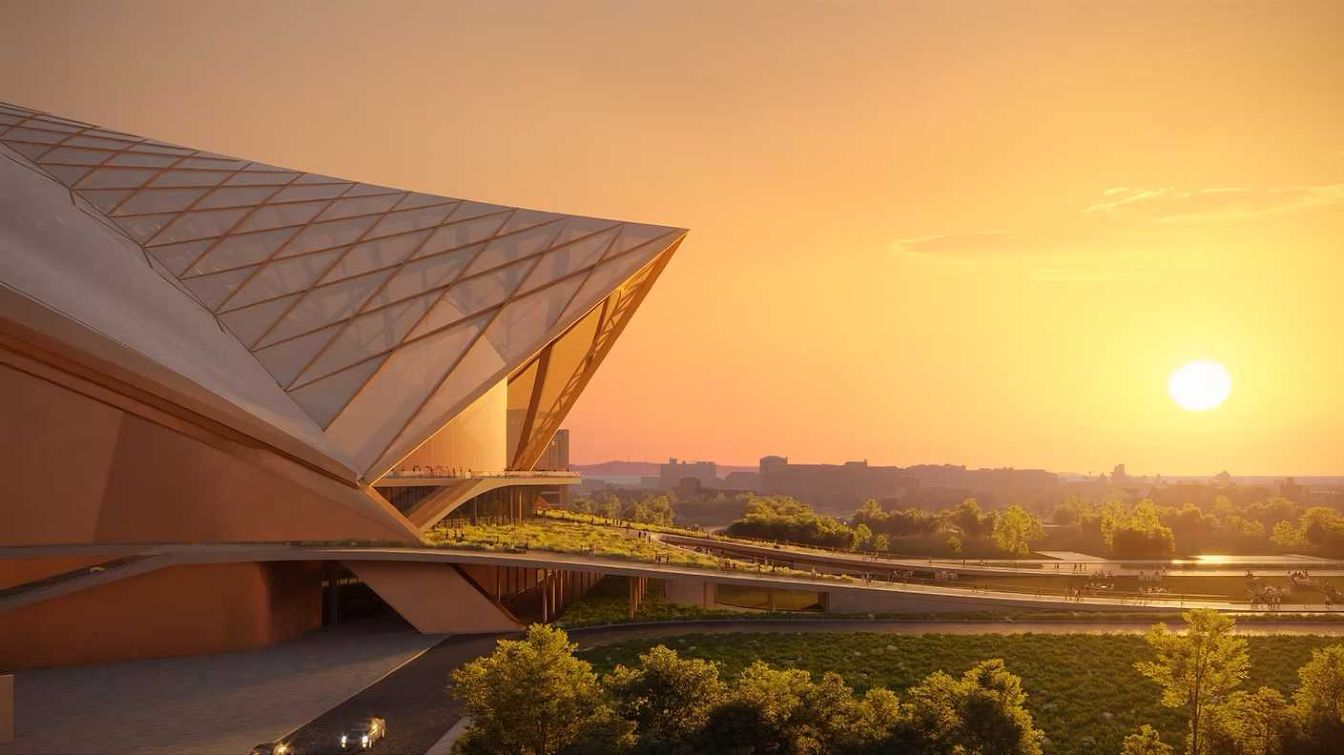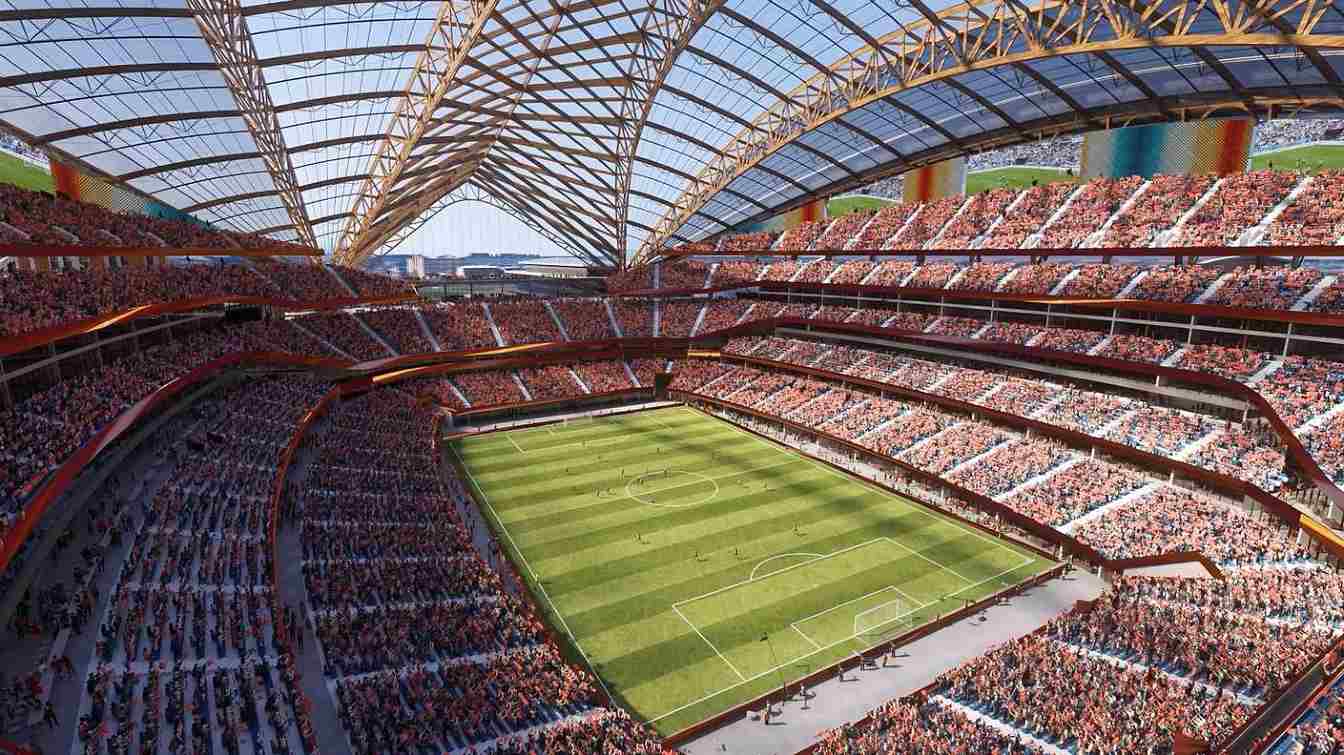USA: Commanders closer to a return to D.C.? Hearings done, decision time ahead
source: StadiumDB.com; author: Paulina Skóra
 Washington is gearing up for one of the biggest urban transformations in its history. On 190 acres of the old RFK Stadium site, a new mixed-use neighborhood is in the works — with a brand-new stadium for the Washington Commanders at its heart.
Washington is gearing up for one of the biggest urban transformations in its history. On 190 acres of the old RFK Stadium site, a new mixed-use neighborhood is in the works — with a brand-new stadium for the Washington Commanders at its heart.
Advertisement
A stadium to kick things off
The plan includes a modern, covered RFK Stadium for 65,000 fans, set to open in the fall of 2030. Alongside it: two large parking decks for supporters, an underground employee garage, a hotel, and an office building. While the stadium will only occupy about 10% of the land, it’s expected to anchor and set the tone for the entire redevelopment.
Right by the Stadium-Armory Metro station, a new Plaza District will connect the venue to housing, retail, and entertainment. Festival Plaza is expected to offer restaurants, bars, and large outdoor screens — echoing the vibe of Capital One Arena or Nats Park. This part of the development will also include the tallest buildings, from six to eleven stories, blending into the lower residential blocks of nearby Kingman Park.
Most of the new housing will be built in the Riverfront District — a quieter, more residential area also under the Commanders’ management. This zone will feature shops, cafés, possibly another hotel, and thousands of parking spaces for tailgating. Game-day rental zones for fans are also in the works.
Housing, recreation, and green space
The full project includes at least 6,000 housing units for around 10,000 people. One in three homes will be offered at affordable prices. As the land sits on a 99-year federal lease, most apartments will be available for rent, not purchase. A low-rise Kingman Park District will act as a buffer zone between the new development and existing neighborhoods.
On the recreational front, 45 acres are set aside for a youth sports complex worth $89 million. This includes existing fields at the RFK Campus and open-air event space. Meanwhile, the narrow Anacostia Commons will be preserved as a natural green corridor with river access and walking trails.
Public hearings: optimism and pushback
Nearly 500 residents spoke over two days of hearings. The voices were split — some welcomed the team’s return and the neighborhood upgrade, while others sharply criticized the use of public money for a privately-owned franchise. Council members Wendell Felder and Kenyan McDuffie pushed for more affordable housing, green space, and local job opportunities. Robert White added a call for a gentrification protection fund and property tax freezes for long-term residents.
Mayor Muriel E. Bowser and Commanders president Mark Clouse faced a grilling from city council on Wednesday. Bowser, a vocal backer of the stadium deal, stressed the stakes: This is a really big deal. Emotions are high, and questions are valid, but we have to get this right. If we miss this window, we could lose $2.7 billion in private investment.
Transportation, parking, and labor concerns
Parking and transit drew the most heat. Residents of Kingman Park fear traffic chaos and declining quality of life, while fans want enough parking on game days. The city will fund two parking decks; the team may pay for a third. But there's no firm commitment yet on expanding Metro or improving public transport — a major planning flaw, according to council member Charles Allen.
Another sticking point: labor agreements. Some council members won’t support the deal unless union contracts are extended beyond just the stadium, parking, and one hotel. Unions say they’ll hire at least 50% D.C. workers, but Bowser warns that overly strict conditions could push hiring to outsiders.
Then there’s the issue of rent: the team won’t pay any for the stadium for the first 28 years. A clause in the new agreement would force earlier payments if the team misses key construction milestones.
After the hearings: slight edge for supporters
Despite the tension, most council members now appear to lean toward approving the revised deal. Economic arguments and the chance to revitalize neglected land seem to outweigh the doubts. Councilmember Christina Henderson warned that further delays could stall the project for years — as has happened with other public developments.
September vote will seal the project’s fate
A final vote is scheduled for September 17. If passed, construction could begin in 2026, with the full district — stadium, housing, and infrastructure — ready by 2040. It’s a defining decision that could shape the future of Washington’s east side for generations.
Advertisement
 StadiumDB
StadiumDB

